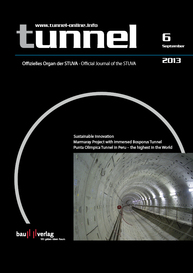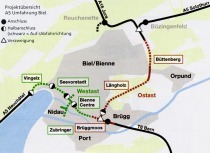Austrian Guideline on Inner-Shell Concrete
Guideline of the Austrian Society for Construction Technology (öbv), Vienna/A, December 2012, 99 pp., DIN A4 with 42 Ill. /Tab. and 50 sources, bound € 45.
//www.bautechnik.pro" target="_blank" >www.bautechnik.pro:www.bautechnik.pro
The “Inner-Shell Concrete” guideline – first published in 1995 and revised in 2003 – is now available in its 3rd edition. The “Concrete in Tunnelling” working group has ensured it contains the latest state-of-the-art from the concrete technology, design and execution of construction sectors. It is applicable for producing inner shells made of concrete, above all in transport tunnelling using trenchless methods, for water tunnels, shafts and chambers as well as for cut-and-cover with vault cross-section; water impermeable structures produced by cut-and-cover (white troughs) are excluded.
Inner-shell concrete is composed in such a way from predetermined concrete components (cement, additives, aggregates, water and admixtures) that the required properties for this concrete can be safely attained given the expected on-site conditions. It must be emphasised from the concrete technological viewpoint that to provide a better overview requirements on inner-shell concrete have been divided into basic demands, demands on the standard concretes mainly used and demands on special concretes. The standard types of concrete cover most of the expositions required for tunnel inner shells with existing concepts and in this way create straightforward, clear rules for planning and execution.
During execution, a distinction is drawn between reinforced and unreinforced inner shells with and without waterproofing as well as water-impermeable inner shells. Establishing the standard cross-section for planning and drawing up the contract as well as for cyclical and continuous excavation has been revised and the concrete covering for the determining parameters corrosion protection and fire protection laid down. With recommendations on tendering, the contractual regulations for adhering to the maximum permitted construction element temperature have been established. Special methods such as shotcrete inner shells, concrete segments, fibre concrete and inner shells for restoration jobs are also dealt with. The guideline also applies to intermediate ceilings and ventilation partition walls for road tunnels as well as for intermediate walls in tunnels (niches, lock walls, cross-passages and evacuation tunnels) but not for the production of control facilities in transport tunnels. The guideline refers to relevant codes of practice and further reference sources are cited.⇥G.B.


